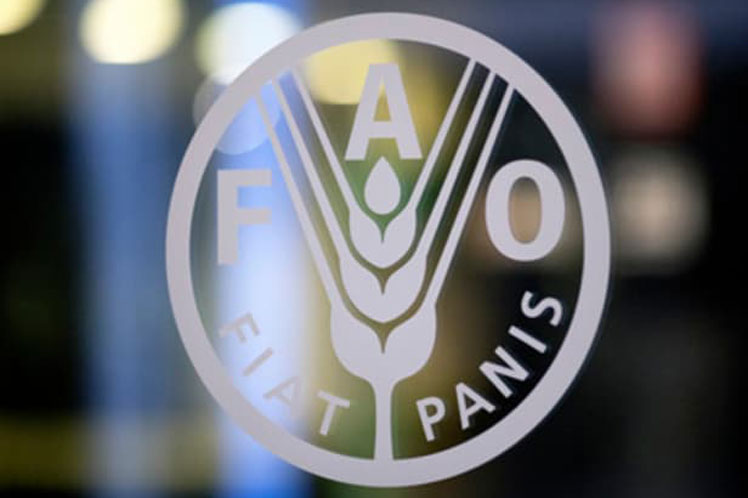
ENTRETIEN AVEC FAO:
Libre Entreprise: Could agroecology feed the world by itself?
FAO: Agroecology offers a unique approach to meeting the needs of future generations while ensuring no one is left behind. With family farmers, including smallholder farmers, indigenous peoples, fisher folks, mountain farmers and pastoralists at its heart, agroecology seeks to transform food and agriculture systems, addressing the root causes of problems and providing holistic and long-term solutions based on co-creation of knowledge, sharing and innovation, including the combination of local, traditional, indigenous and practical knowledge with multi-disciplinary science. Although not a new concept, agroecology is today gaining interest worldwide among a wide range of actors as an effective answer to climate change and the interrelated challenges facing food systems, finding expression in the practices of food producers, in grassroots social processes for sustainability and the public policies of many countries around the world. Many successful agroecological approaches are today being scaled up through the support of public policies, networks of knowledge exchange, and by strengthening rural institutions and improving access to markets. The agroecology approach is holistic, balancing focus on people and the planet, the three dimensions of sustainable development – social, economic and environmental, while strengthening, the livelihoods of smallholder food producers, indigenous peoples, women and youth Agroecology contributes directly to multiple SDGs through integrated practices that cut across many areas. Along with the SDGs, agroecology can also contribute to realising the aims of the Paris Climate Agreement, the Convention on Biological Diversity and the United Nations Convention to Combat Desertification.
Some data:
Agroecological approaches around the world have been shown to improve farmers’ income up to 30 percent by, among other strategies, diversification, external input reduction and alternative marketing channels. For instance, farms that adopted agroecological methods among 180 communities of smallholders retained 40 percent more topsoil and suffered 69 percent less erosion after Hurricane Mitch hit Nicaragua. Agroecological techniques coupled with locally sourced practices can restore and improve soil fertility and health. The combination of croprotation, mixed cropping and ‘zaï’, a local water collection technique, resulted in an up to 130 percent yield increase compared with conventional practices in three provinces of Burkina Faso.
Way forward:
Agroecology has immense potential as a means for governments to achieve their national development targets. Not only does the approach offer the prospect of zero hunger, poverty eradication, growth and sustainable resource management, but policies championing agroecology are sure to be embraced by the local population. Scaling up agroecology from a practice of some countries to a practice of many would have a dramatic effect on sustainable agriculture, enhancing food systems worldwide. It promises to support the integration of more climate-resilient production systems, incorporating forestry, animal husbandry, fisheries and farming into an approach that could more effectively achieve progress across multiple SDG targets. Successfully scaling up agroecology requires significant commitment at the policy level, a redirection of finances and investment, more inclusive and diversified food systems, strengthening the organizations of producers, and new partnerships between small-scale producers and entrepreneurs and the larger scale private sector actors.
LE: In Agriculture, pesticides are a serious risk for both humans and the environment. What FAO does in this field?
FAO is involved with pesticide risk reduction in many ways. FAO actively promotes the use of Integrated Pest Management (IPM), to reduce the reliance on pesticides[1]. IPM means the careful consideration of all available pest control techniques and subsequent integration of appropriate measures that discourage the development of pest populations and keep pesticides and other interventions to levels that are economically justified and reduce or minimize risks to human and animal health and/or the environment. IPM emphasizes the growth of a healthy crop with the least possible disruption to agro-ecosystems and encourages natural pest control mechanisms. Farmers are trained to use IPM preferably through the so-called Farmer Field School (FFS), which are effective in empowering farmers to take informed decisions about pest management on their crops.
IPM programmes have demonstrated that it is possible to significantly reduce pesticide use without reducing crop yield or farmer profit, even in areas with increased pest pressure. Within regional IPM FFSs programmes, a reduction of 70% of use of pesticides has been achieved on rice, cotton and vegetables. Up to now, about 10 million farmers have been trained on IPM through FAO and the regional Farmer Field School (FFS) programme in more than 95 countries in Africa, Latin America, Caribbean, Asia and Eastern Europe[2].
Secondly, whenever pesticides have to be used, and we do not have alternative pest management options, we work with farmers, governments and pesticide companies, to reduce their risks. All these stakeholders, that are in some way involved in the use of pesticides, have adopted the International Code of Conduct on Pesticide Management. FAO and governments in developing countries work together promoting the regulation on the use of harmful pesticides and promoting good practices by enhancing national capacity of pesticide administration, promoting IPM (Integrated Pest management), phasing out HHPs (Highly Hazardous Pesticides), introducing bio-pesticides, training farmers on the safe use of pesticides, setting up standards on pesticide residues in food (through the Codex Alimentarius) and disposing of obsolete pesticide stocks[3], etc.
Thirdly, FAO is carrying out specific activities, for instance, risk reduction of Highly Hazardous Pesticides (HHPs), which focuses on products that present particularly high levels of acute or chronic hazards to health or environment[4]. FAO supports in developing regional strategies for phasing out HHPs in South Africa, East Africa and Pacific, and assist members such as Botswana and Mozambique in the identification and risk assessment as well as phasing out of HHPs. Another key activity to pesticide risk reduction is FAO’s programmes for capacity building of pesticide regulators, risk assessors, staff in Ministries of agriculture and environment, pesticide users, etc. Capacity building programmes are generally set up together with national governments, regional institutions, private sectors and non-governmental organizations. So far, training workshops have been conducted in more than 30 countries in Africa, Asia, Latin America and Pacific.
FAO is promoting use of low risk pesticides, in particular bio-pesticides, to reduce pesticide risks. A programme in Madagascar has shown that bio-pesticides could be an effective option for locust control[5]. Use of pesticides has been reduced by 50% in China on tobacco by applying biological control. FAO has also helped shepherd bio-pesticide use against bamboo locusts in Laos. It was estimated that the use of bio-pesticides has increased by 15-20% per year before 2015.
Furthermore, FAO hosts part of the Secretariat of the Rotterdam Convention of the Prior Informed Consent (PIC) procedure for certain hazardous chemicals and pesticides in international trade.[6] This Convention is about the exchange of information on these chemicals and pesticides, and on shared responsibility in order to protect human health and the environment.
The Convention establishes a list named Annex III of such chemicals, making them subject to the prior informed consent (“PIC”) procedure. Countries that have ratified the Convention are required to take a decision on the future import of these chemicals. In addition, exporters of chemicals not listed by the Convention but banned or restricted in the exporters’ territory for health or environmental reasons need to inform importing countries accordingly.
The Convention promotes the sharing of responsibility for the management of chemicals. It calls on exporters to provide proper labelling and directions on safe handling, and on exporting nations to make sure that producers comply under their jurisdiction.
In conclusion, FAO is very active in pesticide risk reduction and promoting sound pesticide management, and probably the most important intergovernmental organization in this particular area.
LE : Who is responsible for the over usage of insecticides?
FAO: Overuse of pesticides is caused by many factors and is definitely a serious problem, itcan only be solved with joint efforts of relevant parts namely governments, industries, academies, NGOs, and mostly important farmers themselves.
One of the main reasons farmers overuse pesticides is that it gives a (false) sense of security. There is often the misconception that applying a bit more pesticide than prescribed will provide better control of the crop pest or the disease. However, this is not the case and overuse of pesticides may increase the risk of pest resistance, result in excessive pesticide residue, cause unacceptable adverse effects on human health and the environment and are a waste of the farmer’s money. Raising awareness, training and capacity building on IPM and sound pesticide use are therefore of fundamental importance.
Another reason for the overuse of pesticide is the abovementioned development of resistance. Many pests and diseases will develop resistance to individual pesticides, irrespective of how well these pesticides are used. Often the first reaction of farmers to resistance development is increasing the dose of the pesticide, to be able to still control the pest. However, this tends to only further increase resistance problems, and leads to further overuse of pesticides. Shifting to biocontrol and IPM is generally a better way of breaking resistance. Governments and extension service sectors should monitor and prevent the development of resistance.
An important factor leading to pesticide overuse is that agricultural advisory and extension services in many developing countries are understaffed and under resourced and are not able to reach all farmers. The latters therefore rely much on suppliers of agricultural inputs, such as pesticides, for their information. While pesticide retailers may be very knowledgeable and provide good technical advice to farmers, they also have a potential conflict of interest: they need to sell pesticides. As a result, the sole reliance of farmers on pesticide suppliers for their information on pest management, may lead to overuse of pesticides. In addition, poor quality products cannot be effective and deliver efficient results, thus leading farmers to increase dosage to obtain results.
Sudden outbreaks of pests or diseases may be another cause of pesticide overuse. Examples are outbreaks of locusts[7], the appearance of Panama disease in bananas or recent outbreaks of fall armyworm[8] in Africa. If no effective means to control an outbreak are available, this may lead to unrest or panic among farmers and increase pressure on politicians and decision makers to support a larger use of pesticides to control the outbreak. Often, pesticides are overused during the initial stages of such outbreaks, after which better pest control options are slowly introduced.
[1] www.fao.org/agriculture/crops/core-themes/theme/pests/ipm
[2] www.fao.org/farmer-field-schools/en/
www.fao.org/agriculture/crops/core-themes/theme/pests/ipm/en/
[3] www.fao.org/agriculture/crops/obsolete_pesticides/en/
[4] http://www.fao.org/agriculture/crops/thematic-sitemap/theme/pests/code/hhp/en/
[5] http://tv.fao.org/video/index/entryId/1_jfohbt41
[7] http://www.fao.org/agriculture/crops/thematic-sitemap/theme/pests/migratory-pests/en/
[8] http://www.fao.org/food-chain-crisis/how-we-work/plant-protection/fallarmyworm/en/




